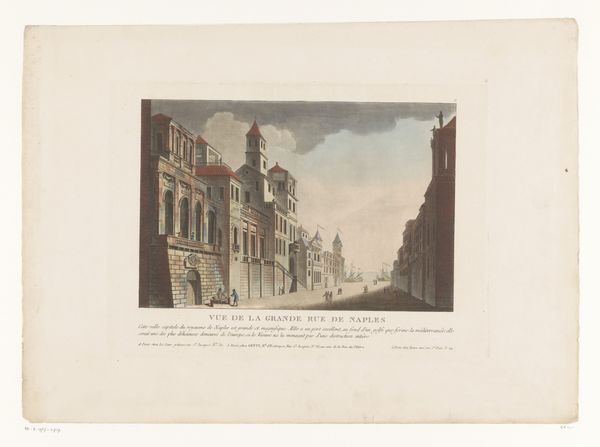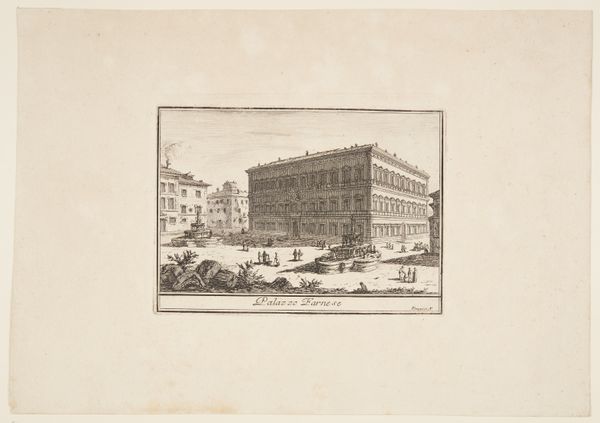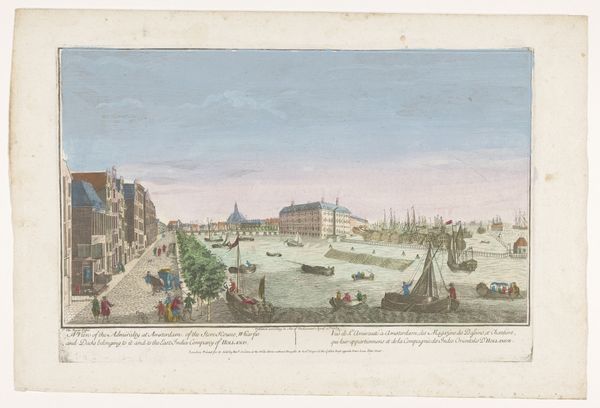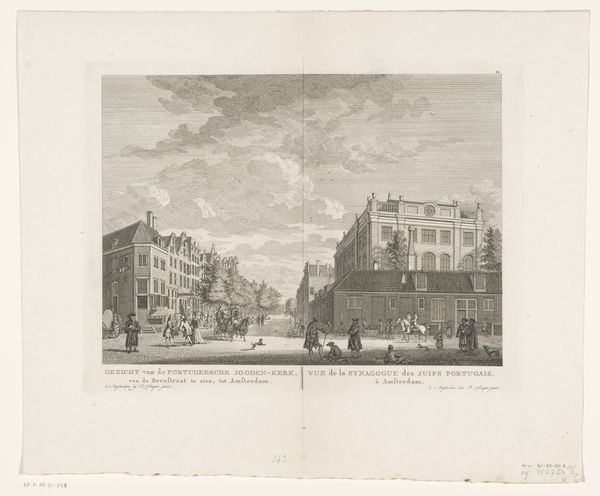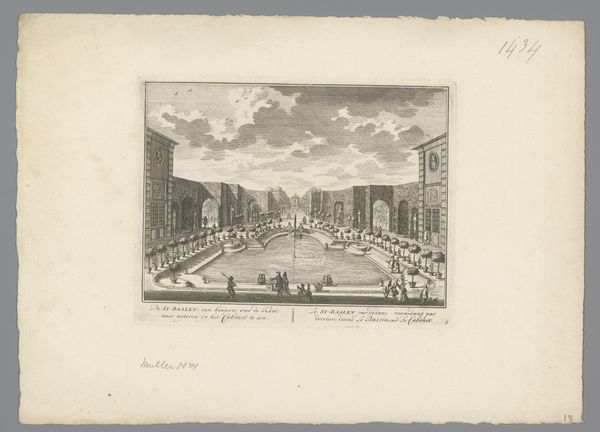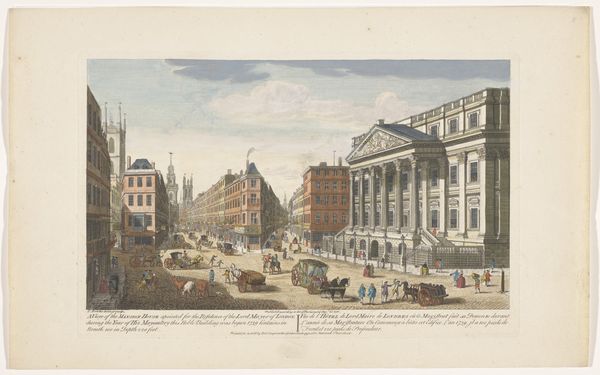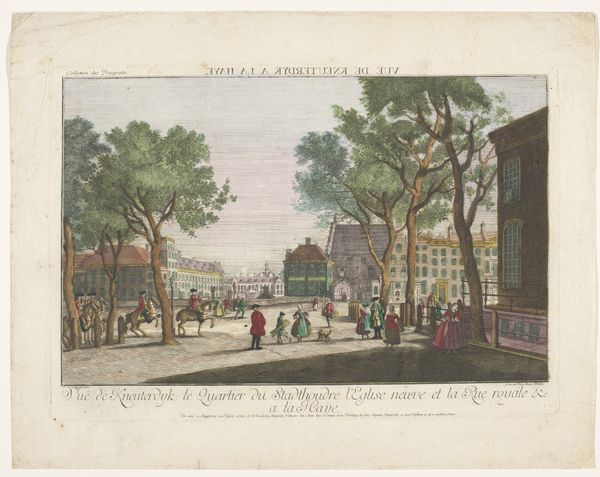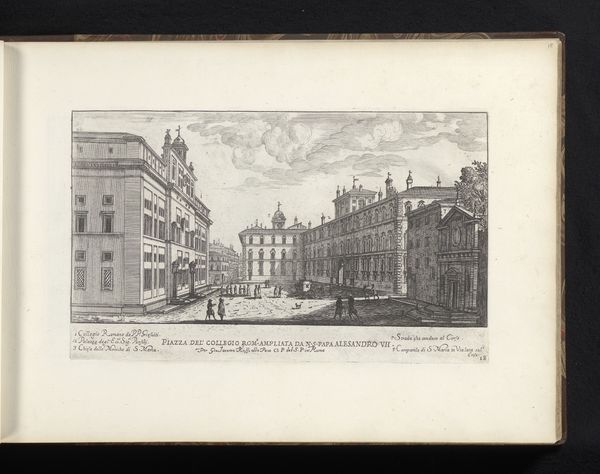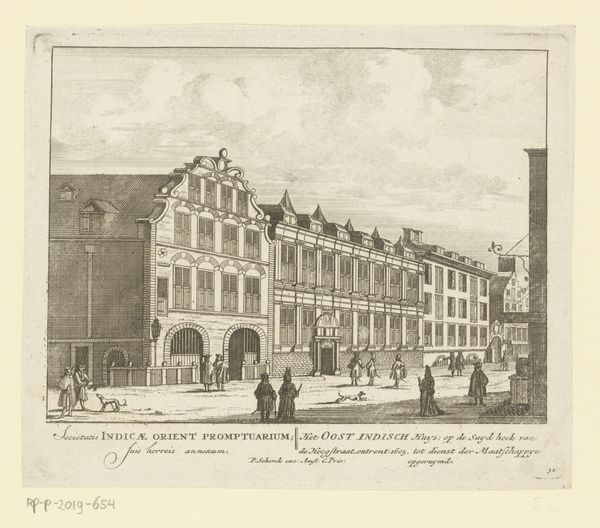
Dimensions: height 330 mm, width 438 mm
Copyright: Rijks Museum: Open Domain
Curator: Here we have "View of Mansion House in London," an engraving that dates sometime between 1755 and 1779. It's currently held in the Rijksmuseum collection. Editor: It has a really formal feel, doesn’t it? That massive building, those little people… everyone seems very deliberate. What strikes me first is the sheer labor invested in creating a scene like this. Look at the intricacy. Curator: Absolutely. As an engraving, think about the artisan involved: each line, meticulously carved into a metal plate, a skilled labour reflecting the burgeoning printing industry in London at the time. We are observing the material culture and production. Editor: And within that industry, power dynamics are playing out. This cityscape isn't just a pretty picture; it's a statement about class and civic pride. Consider the context of the powerful individuals riding in a lavish coach versus the smaller figures walking along the street. We’re invited to think about the social hierarchy of London in this period. Curator: The very choice of the Mansion House, the Lord Mayor's official residence, points to civic authority. It speaks volumes about architectural styles and how buildings like this symbolized the power of London’s governance and the baroque artistic preferences in the day. Editor: Right. Baroque, meant to impress and awe. So this print is less about accurately depicting London, and more about conveying a specific idea about its social order and imperial power. The way the architecture looms over the street suggests an assertion of authority and grandeur and this perspective, framing everyday Londoners, might even be slightly unsettling if you imagine their positionality at this moment. Curator: Interesting point about the architectural hierarchy. Considering its availability as a print, this image allows broader segments of society to consume the idea of London's civic might. Prints served to disseminate status symbols and aesthetic preferences of the elite far and wide. Editor: So what you are suggesting is that it provided an ideological service, shaping public perceptions through visual representation. To come face to face with those inequalities invites reflection on persistent disparities within urban settings. Curator: Precisely. These processes and this medium reinforced dominant societal narratives of Baroque city life, distributing status symbols to various demographics. Editor: Seeing it that way offers another window onto its meaning. Now I’m keen to dig even deeper into the social strata reflected and reinforced in this image. Thanks for expanding the narrative!
Comments
No comments
Be the first to comment and join the conversation on the ultimate creative platform.



